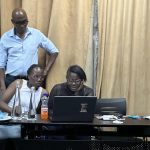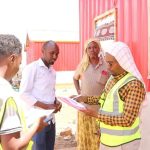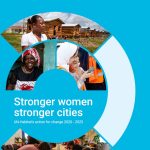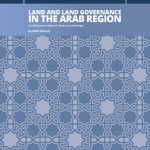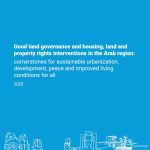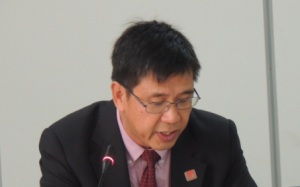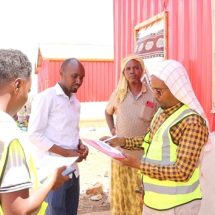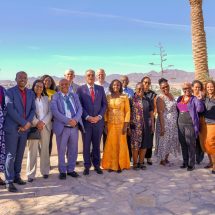Why partner with GLTN?
Fédération Internationale des Géomètres (FIG) or International Federation of Surveyors represents the interest of surveyors worldwide. The surveying profession is multi-disciplinary with a series of specializations seeking to contribute and to collaborate for the efficient planning, administration and management of the land, the seas and any structures there on. One key function of the Surveyor is the mapping and representing of the people to land relationship that contribute towards better knowledge and understanding in support of various initiatives, efforts and programs to secure land and property rights for all. As a responsible Profession, we subscribe and support the values and agenda of GLTN and FIG is very privileged to be part of GLTN from its inception.
Working within GLTN allows the Profession to demonstrate its utility and relevance, providing an opportunity to consider alternative and innovative approaches to address identified challenges. It also gives us a better appreciation and understanding that various implementable concepts and practices developed and promoted through various GLTN initiatives. It therefore promotes collective contributions by and development of our global society
GLTN purposes to secure land and property rights for all, what is the role of a surveyor in this quest?
As a profession that is intimately connected to the natural and built environment, being a place-bound and people-centric Profession, it can be said that surveyors have been dealing with boundaries, sizes and areas, rights, tenures and properties over the ages. We are the Profession that understands, is knowledgeable and able to represent and map the people to land relationship competently. Surveyors not only associate themselves with boundaries and maps but also with values, planning and construction.
The Surveyor is required to practise from its knowledge and competency base, to ensure that its practices, whether it is a delineation of the boundaries of a plot or parcel, the determination of an area, the drawing of a plan, the assessment of the value or worth of that plot or parcel, the estimation of the cost of construction and development on that plot or parcel, the management of the construction and development and its subsequent occupancy, maintenance and management of that valuable asset, the Surveyor has also the ensure its approaches and methodologies as well as the technologies deployed are appropriate for the context and the desired purpose and outcome.
In the quest to secure land and property rights for all, the role and contribution of the surveying, and I hope you can conclude, is very much at the core.
The 2013 FIG Working Week held in Abuja, Nigeria took on the theme Environment for Sustainability. Why was it an important topic?
By environment, we are not merely considering the physical environment, rather the wider and the overall, encompassing societal, environmental, economic and political. The Profession recognizes that we are operating within a changing, complex but connected environment, with multiple stakes, interests and realities. We have to engage and to understand the societal, environmental, economic and political demands and realities as the Profession seeks to extend the use and usefulness of surveying towards the betterment of humanity. The belief is, when we are able to contribute and operate in synergy with and within this environment, we can then have the significance and the sustainability any profession desire for itself.
How would you describe the main outcomes of this year’s event?
Participants, particularly those from outside the Continent, returned home with a better appreciation of the Sub-Saharan African context and complexity from the experiences and encounters prior and during the Working Week. These appreciations and together with the understandings gained from the various discussions and debates during the technical sessions are very useful as a global society and as an individual practitioner. For FIG Council and Office, we met our objective to provide the global forum for professionals, practitioners and partners that can challenge, motivate and at times inspire us to serve the places and the people together.
What is the most striking thing can you remember from the Working Week?
The colours and the crowds! There is no disrespect here, rather an admiration for the culture and its colours. The Local Organizing Committee must be commended for motivating that many nationals to seize the opportunity afforded to participate in this global forum. In terms of numbers, it is by far the largest gathering of participants at any FIG Working Week.
The most striking thing I can remember is the enthusiasm, particularly amongst the younger participants. Participants were enthusiastic about the Working Week, the program and for many, the prospects they have being part of the Profession. The enthusiasm was noticeable to me from the beginning, with the very first event of the eight-day long event for FIG, that’s the Joint UN-Habitat/GLTN/FIG Training of Trainers Workshop on Social Tenure Domain Model (STDM) for younger surveyors that was facilitated by the GLTN Secretariat and FIG’s Young Surveyors Network.
Youth and Land – Youth and Land is a ‘fairly young’ topic, is it a conversation worth having and why?
The youth of today is the adult of tomorrow! Thus the short answer is “yes”, it is a conversation worth having in the belief that if we can more effectively addressed the issues, concerns and aspirations of the youth today, we could perhaps have are more dynamic and productive tomorrow.
What are the entry points available to young people interested in the land sector?
The “entry points” are many particularly as we look at the overall context and quest to secure land and property rights for all and ranges from the managerial to the legal to the technical to the participatory, from the professionally registered to the those with professional or technical education, to those with vocational training and skills as well as those that begin by working alongside, say a survey or valuation or construction crew. The challenge for the Profession in some jurisdictions is to allow pathway and possibility for these young people to strive and progress, wherever they may enter, within the professional discipline of their choice.
With the Young Surveyors Network in place, what kind of role do you see the youth playing in this ‘new ground’?
My understanding is that this question is within the context of YSN, “youth and land”. FIG’s Young Surveyors Network has embraced this agenda and currently participates actively, particularly in UN-Habitat and GLTN’s initiatives. The current Chair and Chair-elect participated at last year’s World Urban Forum and were particularly active within the Youth Assembly and its activities. The joint UN-Habitat/GLTN/FIG STDM Training of Trainers Workshop in Abuja earlier this month that was facilitated by the GLTN Secretariat and FIG’s Young Surveyors Network demonstrates this commitment. Going forward, I am hearing of another initiative where young surveyors are encouraged to spend their annual holiday volunteering their “barefoot” surveying knowledge and practices at the local or community level on land sector related programs and projects! Hence the role is to actively advocate the relationship youth has with land, another is to encourage active contribution to youth and land initiatives and programs and yet another is to energetically demonstrate the usefulness of Profession in this agenda.

